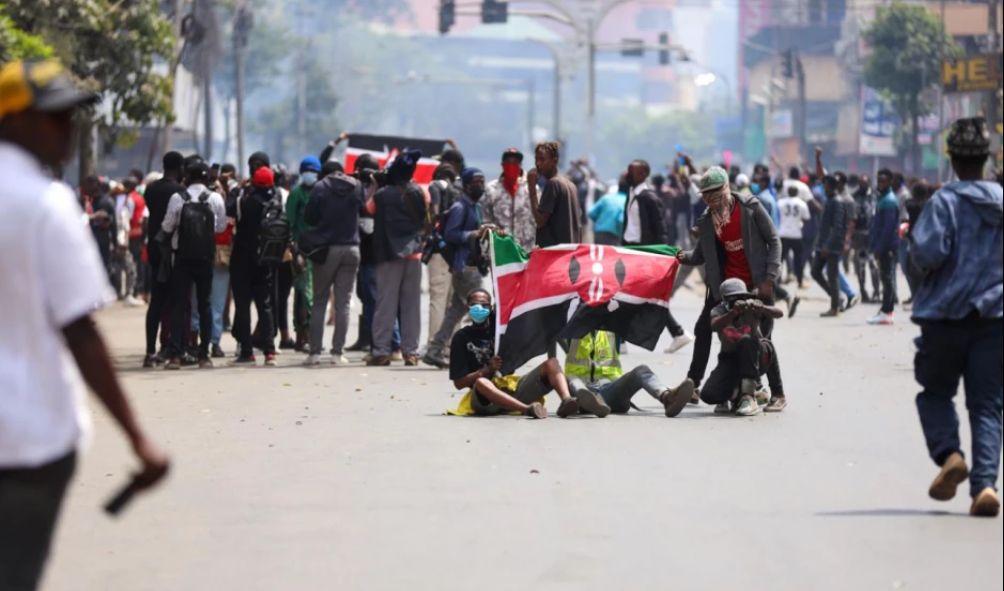Kenya and Bangladesh Protests: A Comparative Analysis of Recent Unrest and Outcomes
Over the past three months, protests have dominated daily news across Africa and Asia.
While these protests share many common elements, their outcomes have varied.
In Bangladesh, the protests known as “The 2024 Bangladesh quota reform” began in July.
These were a series of anti-government and pro-democracy demonstrations led by university students.
Starting in early July, the peaceful protests called for the elimination of hiring quotas in the civil service.
The quotas had reserved a third of public service jobs for the relatives of independence war veterans from 1971, which was considered discriminatory.
Even though the government agreed to abolish the quotas, the protests evolved into anti-government demonstrations demanding the resignation of the entire administration.
Kenya saw a similar situation
The youth-led “Gen Z protests” began on June 18 in response to the anti-Finance Bill, 2024.
Protesters viewed the Bill as punitive, as it introduced new taxes on previously untaxed areas, potentially causing financial strain for many Kenyans.
Although Parliament passed the Bill, President William Ruto rejected it after violent street protests erupted.
Despite this, the Gen Z protests continued, morphing into anti-government demonstrations calling for the resignation of the entire government.
In Bangladesh, the persistent protests led to the resignation of Prime Minister Sheikh Hasina, who had been in power for 15 years.
ALSO READ:
- “Two Groups, One Agenda”: Gachagua Accuses Raila of Secret Political Deals
- Exclusive: Ida Odinga’s 75th Birthday Party in Karen (Photos)
- FKF President Discloses Exact Amount Paid to Harambee Stars Players
- Gachagua’s Ally Senator John Methu Admits Ruto Might Win 2027 Elections
- Maraga Explains Why He Hasn’t Campaigned in Kisii Despite 2027 Bid
The protesters opposed a plan for the army to assume temporary control and instead wanted Opposition politician and Nobel laureate Professor Muhammad Yunus to take over.
Both protests saw violent clashes between the police and protesters, resulting in numerous fatalities.
In Kenya, lobbyists reported over 60 deaths, while the government reported 42.
In Bangladesh, local media reported nearly 300 deaths from the unrest.
As Hasina fled to India, protesters stormed her official residence in Dhaka, causing significant property damage and looting.
Kenyan protesters similarly targeted Parliament, looting and damaging property, though their attempts to invade the State House and Jomo Kenyatta International Airport were thwarted by police.
Allegations surfaced in both countries
In Bangladesh, the ruling elite accused the Opposition of sabotaging initially peaceful protests.
In Kenya, the government initially blamed Russia for financing the protests over Kenya’s stance on certain global issues, later shifting the blame to the Ford Foundation and other NGOs.
The Ford Foundation denied these allegations, stating that its grant-making is transparent and available on its website.
The Foundation also affirmed its support for peaceful advocacy but condemned any acts of violence.
The protests have subsided in both countries, with the formation of a broad-based government in Kenya playing a significant role in calming the situation.
The last anti-government protests in Kenya occurred on August 8, attracting fewer participants compared to previous demonstrations.
A new Cabinet, formed through an agreement between Opposition leader Raila Odinga and President William Ruto, incorporated five members from the Orange Democratic Movement (ODM) and has been in office for less than a week.
Kenya and Bangladesh Protests: A Comparative Analysis of Recent Unrest and Outcomes
